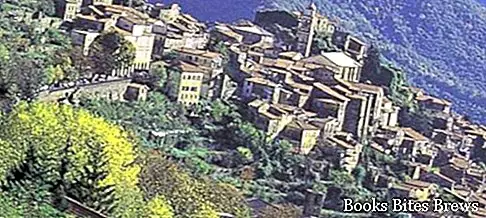What to see in Triora, itinerary including the main monuments and places of interest, including the Church of San Bernardino, the Collegiate Church and the ethnographic and witchcraft museum.
Tourist information
A small village in the hinterland of Liguria, Triora is included in the province of Imperia and located within the Valle Argentina, at an altitude of 780 meters, which makes the mountain type climate characterized by large daily temperature excursions.
It stands out for its characteristic houses overlooking the slope and for having had a strategic defensive position in the past.
Triora is also famous for being the town of witches, with the many references in the country that recall this particular aspect, starting from the Ethnographic and Witchcraft Museum, where important testimonies of the past are kept.
The history of the town includes the trial of 30 women accused of witchcraft in 1587, a time when there was a tendency to attribute the blame for various calamities to some woman accused of possessing evil powers.
Just think that even today it is possible to see some places where traditionally witches are said to have gathered, including the walls of the village and the Cabotina fortress.
What see
Among the places to visit include the typical street of the historic village, the Church of San Bernardino, dating back to the 1400s and featuring a facade comprising a three-arched portico composed of columns and an interior decorated with some Renaissance frescoes attributed to the painter Giovanni Canavesio, the Church of Sant'Antonio abate, the Church of San Dalmazzo, the Church of the Madonna delle Grazie from 1100, the Church of Santa Caterina d'Alessandria from 1300, the Church of Sant'Agostino from 1614 and the Collegiata dell'Assunta, which traditionally it is said to have been erected over an antecedent pagan temple.
This church, initially in Gothic Romanesque style with three naves, was subsequently transformed, making it a single nave.
In 1837 the facade was heavily retouched, covering it with slabs of local black stone.
Of the ancient appearance remains the portal with a pointed arch, made with slate blocks and inserts of white marble.
Inside, in the baptistery, there is a beautiful gold background painting by the painter Taddeo di Bartolo, depicting Jesus Christ and Saint John the Baptist in the rite of Baptism on the banks of the Jordan, dating back to 1397.




